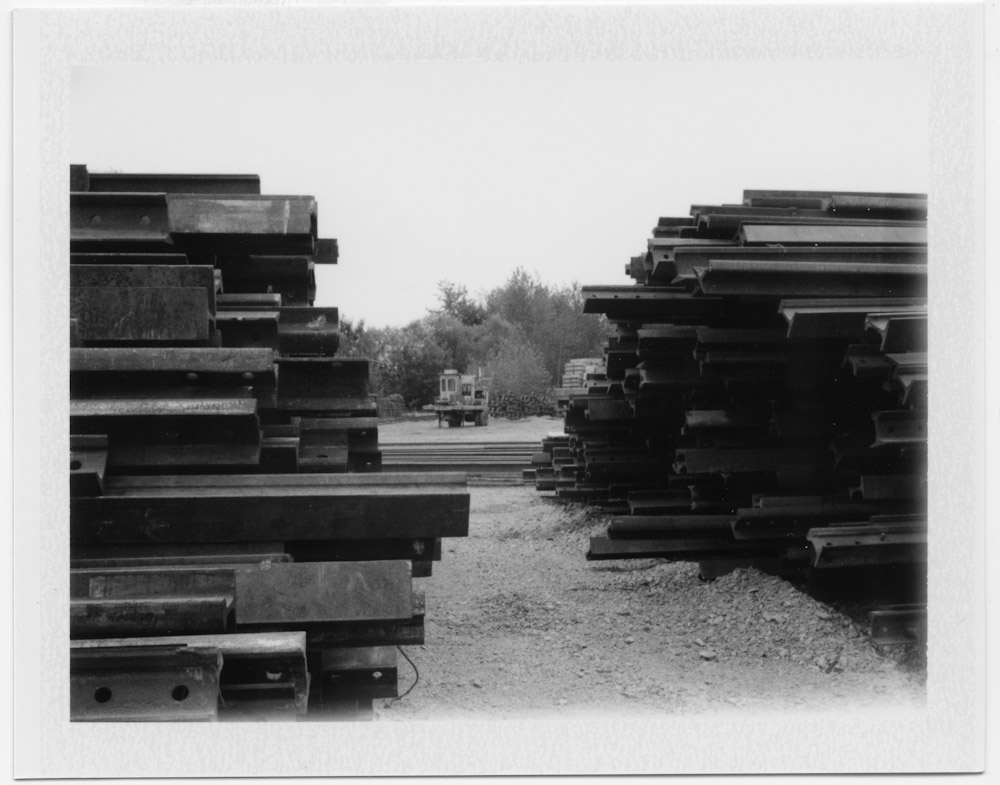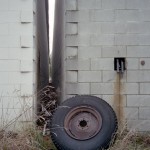Feb
4
2013

Previously on the Fuji DL500 Files: Our hero was uncertain of the quality from this optical oddity. In this episode it becomes much clearer that the lens performs best at 45mm despite the flare it causes and that the 28mm setting is a poor performer. As the 45mm focal length is achieved by swinging an additional optical group into the light path it is apparent that the central area of the lens is fine, it is the outer corners at which the wide setting fails. After only two episodes the Fuji DL500 files are cancelled.
I’m not quite sure how but according to the Technical Image Press Association it won the award for best 35mm compact camera in 1991, perhaps they never actually took any pictures with it.
8 comments | tags: film, Fuji | posted in Cameras, Photography
Jan
14
2013

Not to be confused with my new Pentax Q or the fictional character on Star Trek the next generation. In the heyday of APS film (insert laugh track here) Fuji released this made in China camera with its 22mm lens that looks more glass bead like than lens like. The striking thing about this camera is its non camera shape, it’s very round. Surprisingly that is what is so appealing about it though, worn around your neck it hangs neatly like a giant medallion and nothing says you are a winner like a purple camera medallion. It did come in other colours but those clearly were not for winners.
No controls no over-rides no problem, take pictures have fun.
1 comment | tags: APS, film, Fuji | posted in Cameras, Photography
Nov
14
2012

When I got this instax mini it still had some film in it. Not being one to waste film I decided to shoot with it despite how obviously out of date the film was. So like leaves in the fall these pictures should be raked up and composted.

2 comments | tags: film, Fuji, instax | posted in Cameras, Photography
Nov
5
2012


I’ve been thinking about how to demonstrate the difference between these two 3d “cameras” but it’s not really possible in this 2d format. So it comes down to words I guess. Starting with the screens , despite the fact that both units display a 3d image without the need of glasses the Fuji screen is far superior. The 3.5″ Fuji screen has 1.15Mpixels doubling the HTC’s 4.3″ touchscreen with 540 x 960 resolution. The images displayed on the Fuji are clearer and more colourful. The difference continues with the lenses and sensors, The Fuji has two 10Mpixel 1/2.3″ CCD behind 3x zoom lenses that provides 35mm equivalent focal lengths of 35 to 105mm. The HTC lens and sensor are a bit of a mystery to me but they are a pair of 5Mpixel units and that is halved again when shooting 3D. The fact is it isn’t much of a contest, the Fuji is better all around but then it doesn’t make phone calls or post to Instagram. The surprise reaction of people who see the 3d image suggests to me that it is still a bit of a gimmick, this is also true because of the difficulty of doing anything with the 3d image. I don’t own any other device to display 3d images so they really are only of interest on the camera itself for now. In a sense when I’m taking 3d pictures I’m hedging that they will be of greater interest in the future. This is almost a truism of all photography as they represent a moment in time that won’t be repeated. I’m just doing it in an extra dimension.


The first image is down-sampled from the 7Mpixel Fuji file and the second from the HTC’s 2Mpixel file. At full resolution the difference is much more apparent.




This mix of samples from the two “cameras” are being displayed as animated GIF’s or wigglegrams. The two images are toggling back and forth giving a view as if you stopped time and moved your head from side to side, you can stop time can’t you?
1 comment | tags: 3D, Cameras, Digital, Fuji, HTC | posted in Cameras, Photography, Processing, Uncategorized
Oct
17
2012
After finishing the pack of Fuji Fp100C in my Polaroid pack film camera I loaded it with Fuji FP3000B and I am smitten. While I enjoyed the results from the colour film I haven’t been completely sold on it. There is a coolness to the colour and the image clarity is not spectacular. With this faster black and white film (3000 ISO) though the camera is stopped down considerably allowing the lens to perform better. It just seems to be the right film for the camera and the era, you expect a black and white print to come out of this camera.

1 comment | tags: BW, Fuji, instant, polaroid | posted in Photography, Processing
Oct
9
2012

The Minolta Himatic 7s is another light tight box with a lens. It’s a bit heavy and quite noisy compared to similar cameras but the Rokkor 45mm 1:1.8 lens is a good performer. It does have the option of completely automatic exposure but I like to use it in manual mode performing the light metering with a digital camera. You might be wondering if I’m already using a camera to take light measurements why not be done with it and give up film. The simple answer is I like using these camera and framing and composing with the optical finder. I also don’t meter every scene but get a good estimate of the light and adjust from there which isn’t so different from using an external light meter I’m just getting a test shot too. I mentioned at the start about how noisy it is and it’s true of almost every operation of the camera from cocking the shutter to the release of it. It has a very sharp metalic sound, everyone and thing around you is going to know you just took a picture.
2 comments | tags: camera, film, Fuji | posted in Cameras, Photography
Sep
19
2012
Actually it’s more like a black hole sun on my Fuji instant print. I’ve never seen this before but I believe it’s solarization. A quick look through my 1978 edition of The Manual of Photography explains that at a certain point of the exposure curve of a negative the density actually starts to decrease. It also suggests that the exposure required is “commonly on the order of magnitude of one-thousand times greater than normal” . That sounds like the sun to me.

In addition to pointing the camera straight at the sun I also used a Cokin 85C filter to make sure the image was nice and warm. I’ve found that FP100c produces prints on the cool side of the spectrum especially when compared to the Polaroid Spectra I’ve also been shooting.
Here is a digital shot I took just a little earlier.

no comments | tags: film, Fuji, instant | posted in Photography, Processing
Aug
28
2012

 As I shoot through my first pack of Fuji FP100c I hope to learn what works and what doesn’t with this film and camera (Polaroid 330) My initial reaction is that it doesn’t lend itself to taking close-ups or landscapes. The best shot so far has been a Portrait and maybe that is where the strength of this combination will be.
As I shoot through my first pack of Fuji FP100c I hope to learn what works and what doesn’t with this film and camera (Polaroid 330) My initial reaction is that it doesn’t lend itself to taking close-ups or landscapes. The best shot so far has been a Portrait and maybe that is where the strength of this combination will be.
no comments | tags: Fuji, instant, polaroid | posted in Cameras, Photography, Processing



























































